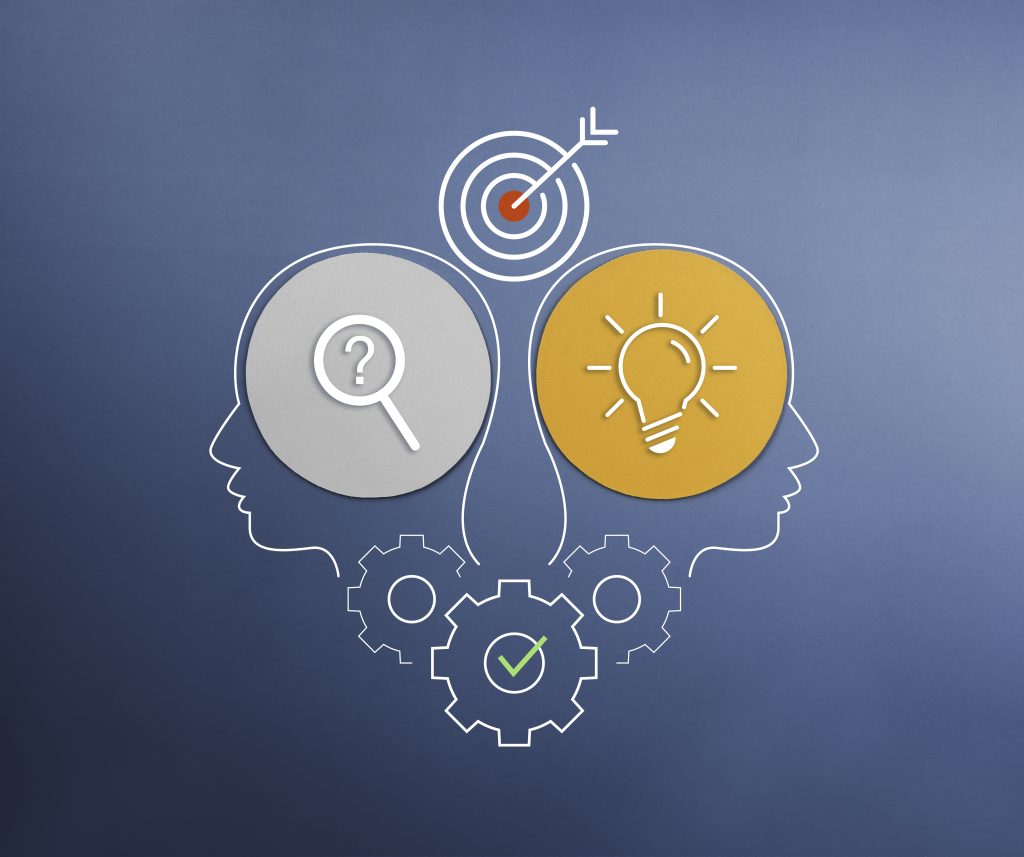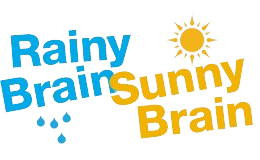Have you ever wondered how you are able to perceive the world around you, pay attention to important details, and remember information for later use? Imagine this scenario: You are walking down a crowded street, surrounded by a sea of people, cars, and noise. Despite the chaos, you are able to focus on the conversation you are having with a friend, while also noticing the stop sign up ahead. How is this possible? The answer lies in the three basic cognitive processes that underlie our everyday experiences: perception, attention, and memory. These processes are the building blocks of our cognitive abilities and enable us to make sense of the world. But there’s more to it than meets the eye. By understanding these processes, you will not only gain insights into your own mind, but also discover practical ways to enhance your cognitive performance. So, let’s dive in and explore the fascinating world of cognitive processes together.
Perception: The Interpretation of Sensory Information
Perception, the process of interpreting sensory information, plays a crucial role in how we understand and navigate the world around us. It involves taking in information through our senses and organizing it into meaningful patterns. Perception is not just a passive process but an active one that influences our decision making, problem solving, sensory integration, cognitive biases, and visual perception.
When it comes to decision making, perception plays a vital role in how we perceive and interpret the available information. Our perceptions can influence the choices we make and the actions we take. Similarly, in problem solving, our perception of the problem and its various aspects can shape our approach and strategies.
Sensory integration, another aspect of perception, refers to the brain’s ability to combine and make sense of information from different sensory modalities. This integration allows us to have a coherent and unified perception of the world around us.
However, perception is not always an accurate representation of reality. Cognitive biases, such as confirmation bias or the tendency to favor information that supports our existing beliefs, can distort our perception and lead to faulty decision making.
Visual perception, specifically, is the process of interpreting and making sense of visual stimuli. It involves recognizing objects, depth perception, and color perception, among other visual processes. Our visual perception greatly influences how we navigate and interact with our environment.
Attention: Focusing on Specific Information
As we shift our focus from the interpretation of sensory information in perception, we now turn our attention to the cognitive process of attention: the ability to selectively focus on specific information. Attention plays a vital role in our daily lives as it allows us to improve focus, reduce distractions, enhance cognitive performance, and prioritize information. Here are three ways attentional training can help you:
- Improving focus: Attentional training exercises, such as mindfulness meditation, can strengthen your ability to concentrate on a single task and resist distractions. By practicing these techniques regularly, you can enhance your focus and stay more engaged in your activities.
- Reducing distractions: Attentional training helps you become aware of potential distractions and develop strategies to minimize their impact. Techniques like setting clear goals, creating a conducive work environment, and managing time effectively can help you stay focused on the task at hand.
- Enhancing cognitive performance: Attentional training has been shown to improve cognitive performance in various domains, including memory, problem-solving, and decision-making. By training your attention, you can optimize your cognitive abilities and perform at your best.
Memory: Encoding, Storing, and Retrieving Information
Memory is a complex cognitive process that involves the encoding, storing, and retrieving of information. Encoding strategies play a crucial role in how information is initially processed and stored in memory. These strategies can include focusing attention, creating meaningful associations, and using visual imagery. Once information is encoded, it undergoes memory consolidation, a process where it becomes more stable and less susceptible to forgetting. Retrieval cues, such as contextual information or related memories, can aid in the retrieval of stored information.
However, memory is not a flawless process. Forgetting mechanisms can occur, leading to the loss or inability to retrieve information. Memory distortions can also occur, where the retrieval of information is influenced by biases or inaccuracies. These distortions can be influenced by various factors, such as emotional states or external suggestions.
Understanding the encoding, storing, and retrieving processes of memory is essential for improving cognitive performance and memory recall. By utilizing effective encoding strategies, memory consolidation techniques, and retrieval cues, individuals can enhance their ability to remember and retrieve information accurately. Additionally, being aware of the potential for forgetting mechanisms and memory distortions can help mitigate their impact on memory performance.
Language: Communication and Expression of Meaning
Understanding the intricate process of memory encoding, storing, and retrieving information sets the foundation for exploring the subtopic of language: communication and expression of meaning. Language is a complex cognitive process that involves the use of symbols, such as words and grammar, to enable communication and the expression of meaning. It plays a crucial role in facilitating social interaction, cultural transmission, and cognitive development. Here are three key aspects to consider:
- Communication Strategies: Language provides individuals with a range of strategies to convey their thoughts, emotions, and intentions. From verbal and non-verbal cues to tone of voice and body language, effective communication strategies enhance understanding and facilitate meaningful interactions.
- Linguistic Development: Language acquisition begins at an early age, with children gradually developing their linguistic skills by imitating and interacting with others. This process involves acquiring vocabulary, grammar rules, and the ability to comprehend and produce meaningful sentences.
- Language Processing and Culture: Language is deeply intertwined with culture, shaping our perception and understanding of the world. Different cultures have unique linguistic features, idioms, and expressions, which reflect their values, beliefs, and social norms. Language processing involves the interpretation of cultural nuances and the adaptation of communication to different cultural contexts.
Reasoning: Using Logic to Draw Conclusions
Using logical reasoning allows you to draw accurate conclusions based on evidence and sound judgment. Logic-based deductions, critical reasoning, and problem-solving strategies are all essential components of rational decision-making. By engaging in logical inference, you can analyze information, identify patterns, and make informed choices.
Logical reasoning involves the ability to evaluate information objectively and apply logical principles to draw conclusions. It requires analyzing evidence, recognizing logical fallacies, and using deductive and inductive reasoning. Critical thinking skills are crucial for identifying biases, evaluating arguments, and making well-informed judgments.
Problem-solving strategies also rely on logical reasoning. By breaking down complex problems into smaller components, you can systematically analyze and evaluate various solutions. This process allows you to identify the most logical and effective approach.
Rational decision-making involves considering all available information, weighing the pros and cons, and making choices based on logical principles. It helps you avoid impulsive decisions and ensures that your choices are based on careful deliberation and reasoning.
Creative Thinking: Perception, Attention, and Memory in Creativity
By engaging in creative thinking, you can harness the power of perception, attention, and memory to generate innovative ideas and solutions. Here’s how these cognitive processes contribute to creativity:
- Perception and Creativity: Perception allows us to interpret sensory information and make sense of the world around us. In the context of creativity, perception helps us see things from different perspectives and make original interpretations of our experiences. This fresh outlook can lead to unique insights and creative breakthroughs.
- Attention and Original Ideation: Attention is the ability to focus on specific information while ignoring distractions. In creative thinking, attentional selections help us recognize relevant experiences and make connections between seemingly unrelated ideas. By directing our attention to novel and interesting stimuli, we can generate original ideas and solutions.
- Memory and Creative Thinking: Memory plays a crucial role in creative thinking by encoding, storing, and retrieving information. Our past experiences and knowledge stored in memory serve as a foundation for generating new ideas. Memory enables us to draw upon previous solutions, combine different pieces of information, and create innovative solutions to problems.
- Language and Innovative Expression: Language is a complex cognitive process that enables us to communicate and express meaning. In the realm of creativity, language allows us to articulate our ideas, share them with others, and explore new possibilities through words and grammar. Language provides a medium for innovative expression and collaboration.
- Reasoning and Problem Solving in Creative Contexts: Reasoning involves using logic to draw conclusions and make decisions. In creative thinking, reasoning helps us analyze problems, identify patterns, and develop unique solutions. By applying logical thinking to creative contexts, we can overcome obstacles and find innovative ways to solve complex problems.
Neural Basis of Reading: Brain Regions Involved in Reading
Neuropsychological and neuroimaging studies have revealed the specific brain regions that are involved in the complex process of reading. Different languages and experiences can impact the tuning of the reading system, and Italian-speaking individuals benefit from consistent mappings between words’ appearance and sound. Developmental dyslexia and reading skill variations can affect brain activation patterns, while acquired brain damage can lead to changes in the involvement of brain regions in language tasks. These studies have shown that the neural basis of reading involves the activation of various brain regions, such as the occipital lobe, which is responsible for visual processing; the temporal lobe, which is involved in language comprehension; and the parietal lobe, which plays a role in attention and working memory. Additionally, the frontal lobe, particularly the prefrontal cortex, is crucial for higher-level reading skills, including comprehension and inference-making. Understanding the neural basis of reading can provide valuable insights into the mechanisms underlying reading difficulties and inform interventions for individuals with reading impairments.
Theories of Aging: Explaining Everyday Competence and Legal Competence
Studies on the neural basis of reading have provided valuable insights into the specific brain regions involved in this complex process, and now it is important to shift our focus to the theories of aging, specifically exploring how they explain everyday competence and legal competence.
Theories of everyday competence aim to explain how individuals function effectively in daily tasks. Competence can be related to models of basic cognition or domain-specific knowledge bases. It is crucial to understand the fit between cognitive competence and environmental demands. Legal competence, on the other hand, focuses on guardianship and decision-making ability.
To evoke an emotional response in the audience, consider the following:
- Everyday competence models highlight the importance of maintaining independence and autonomy as we age, instilling a sense of confidence and self-worth.
- The decline in cognitive abilities associated with aging can raise concerns about legal decision-making capacity, causing anxiety and uncertainty.
- The concept of fluid and crystallized intelligence reminds us that while certain cognitive skills may decline with age, others can be preserved or even enhanced through experience and expertise, giving hope and motivation for continued growth.
Person-centered intervention approaches offer optimism by emphasizing the optimization of specific aspects of everyday activities. By training basic processes and utilizing useful strategies, individuals can improve their everyday competence, fostering a sense of empowerment and fulfillment in their later years.

